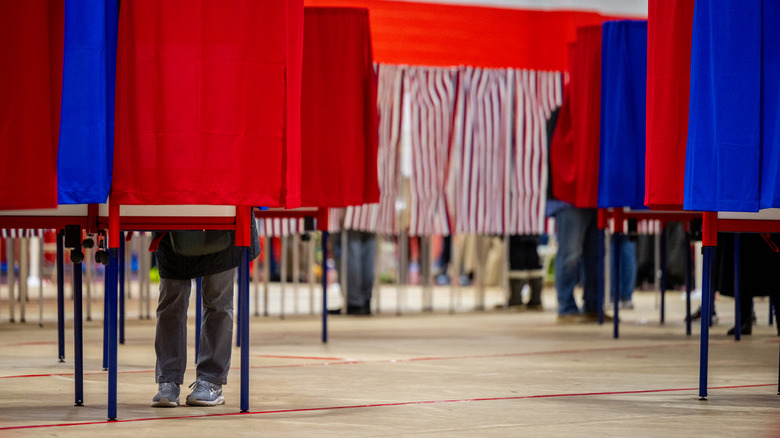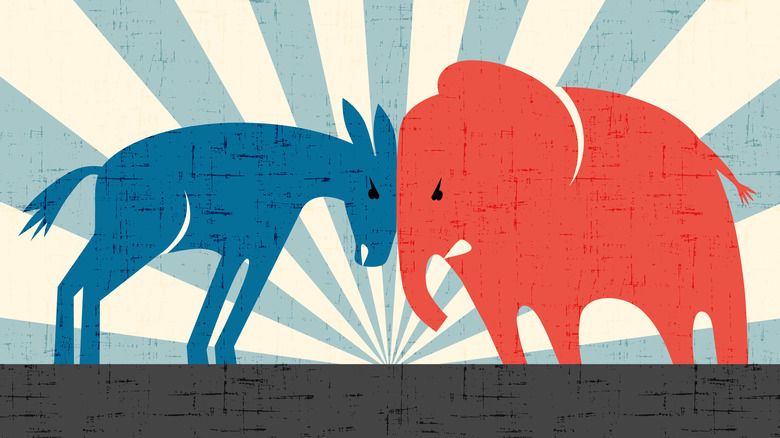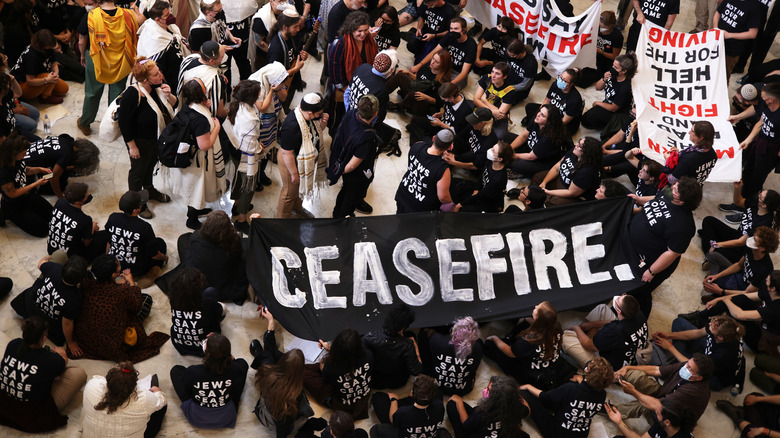The Controversial Detail About The 2024 Election That Actually Makes Perfect Sense
As is so often the case in the digital age, initial reporting can spread far before all the facts are in. Donald Trump and the Republican party would likely have crowed about achieving a landslide win and a "mandate" no matter what, but as vote counting wraps up in California and other western states, it's become clear that Trump's popular vote win was the tightest since the 2000 election. By statistician Nate Silver's math (via X), the vote breaks down to 49.8% for Trump versus 48.4% for Kamala Harris, hardly an overwhelming lead. While Democrats lost control of the Senate, they won most of the swing state seats, and they made crucial gains in states from Wisconsin to North Carolina.
But there is no sugarcoating it — Trump decisively won the electoral vote. And the Democratic party has just begun the painful process of figuring out how a convicted felon who once left office in disgrace after trying to subvert an election managed to win back enough voters to retake the White House. Some conspiracy theorists on the online left have advanced subversion claims of their own, alleging that around 20 million votes were invalidated by Trump supporter Elon Musk (per The Telegraph). The claims, which sprung up before California's count was complete, are groundless.
But a drop in voting from prior elections among a key group does give part of the answer to Trump's win. Compared to 2020, Democratic turnout in 2024 was significantly diminished. The New York Times reported that almost 2 million fewer voters from Democratic strongholds participated in the election and that the fallout occurred across all demographics.
Campaign choices may have driven down Democratic vote share
The autopsy on Kamala Harris's loss in the 2024 election is ongoing as of this writing, and will likely go on for some time. But theories have already been advanced for how she and the Democratic party lost millions of their own voters to nonaction. Some are looking at the campaign choices of both parties. Where Harris had the largest campaign presence — the battleground states — her losses were at their narrowest. But she only entered the race 107 days before the election (per The Nation). President Joe Biden remained the Democratic candidate for over half of 2024, despite repeated warnings that he was likely to lose and hurt Democrats down the ballot — and despite clear sentiment among all voters that he was too old.
Biden's dropping out, and Harris's ascension to the top of the ticket did inject some badly needed enthusiasm into the Democratic campaign. But by late October, there were reports that the energy was dissipating again. These reports reiterated after Harris's loss zeroed in on key decisions that they felt eroded the Democrats' natural base. Coming in for particular rebuke was the decision to chase potential disaffected Republicans by campaigning so prominently with Liz Cheney. Popular messaging from early in Harris's run was also discarded for more centrist, corporate-friendly material. The fields of battle may also have been a factor. Democrats put their resources into traditional advertising concentrated in swing states, while the Republicans directly coordinated with outside groups and wracked up earned publicity through podcasts and social media.
Economics and the Gaza war helped depress turnout
A major factor — possibly the single most decisive element to Kamala Harris's loss in 2024 — is the lingering effect of the inflation spike after the COVID-19 pandemic. It's fueled swings away from incumbent parties across the democratic world, toppling or weakening parties on the left and right. Compared to many elections held in the wake of inflation, the U.S. had a comparatively minor swing.
But the economic messaging by the Harris campaign, or the lack thereof, may have helped depress turnout among traditionally Democratic groups, particularly young people. Though the Biden administration managed several notable pieces of legislation addressing the economic concerns of Americans, that message struggled to break through, in part due to poor communication by the administration and in part because of resistance by some voters to negative facts about Donald Trump's previous time in office.
Messaging failures and policy decisions surrounding the conflict in Gaza also may have depressed Democratic turnout. Significant numbers of young people in battleground states protested the current state of affairs in the Gaza conflict, and the response from the Harris campaign was widely seen as too guarded and insufficient. Polling director John Della Volpe named Gaza as one of the salient issues diminishing voter enthusiasm in an article for The New York Times.


